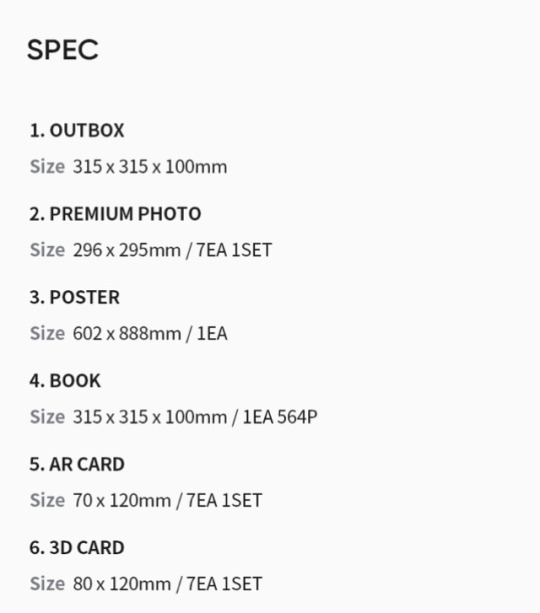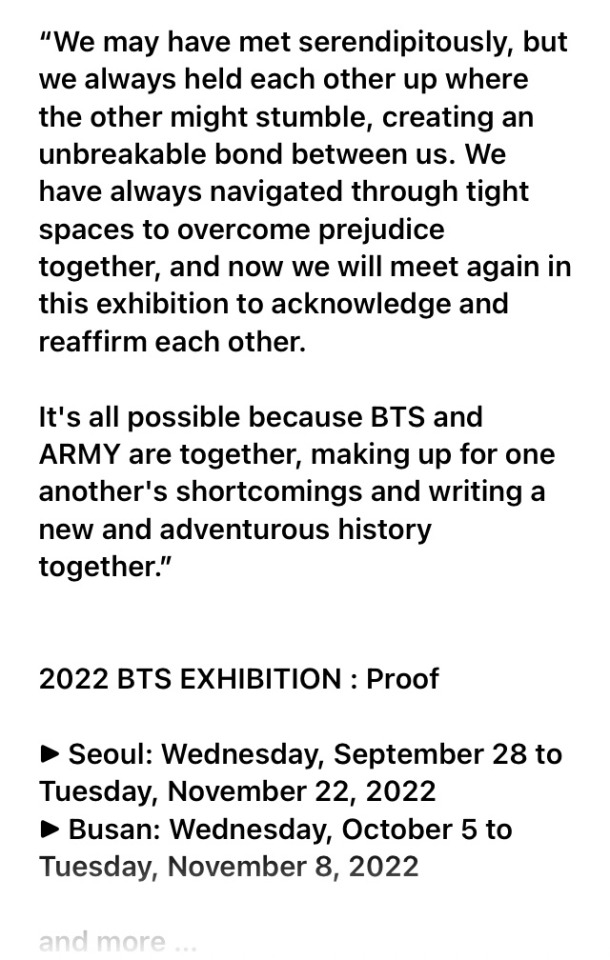#the world’s largest photobook probably
Text
I… CANNOT

I want to. I really, really want to.


And it’s lovely or noble or possibly misguided of BigHit not to go for the charts with this release. For that kind of money they really might as well.

Nope. Shipping to the US from Global is at least double that, maybe more, because of the weight. Nice try though.
The standard version alone is a brick, this thing is a concrete behemoth, it’s at least 3 kg minimum, it’s simply not possible.
I want to, y’all, but I just can’t do it. I’m literally flying to an eastern shore in October for that kind of money. This is concert ticket kind of money. If I could crowdfund it I would but everyone who would donate is an ARMY and y’all deserve your own copy.
I love you, BTS, and I have no doubt it’s worth every penny. Especially with whatever this is:




I just can’t pull the trigger on this one. Not right now.
Ask me again tomorrow. Or next week. I MEAN WHAT IF SHIRTLESS JIMIN’S PHOTOBOOK DROPS WHAT THEN
Sigh.
#hello this is BigHit gives me hives#proof#proof collector’s edition#BTS#the world’s largest photobook probably#it’s huge#it’s a concrete behemoth#seoul/busan exhibition#what the fuuuuuuuuck#i’m so salty#sigh#but jeon park photobooks though and yoongi and maybe hobi#I can’t do everything#I have yet to see BTS live wtf
55 notes
·
View notes
Text
Custom Printing: New Photo Book Binding Equipment
A close friend and colleague in the commercial printing business recently brought to my attention an article about new binding equipment for photo books. So I did some research online and discovered another area of growth within the custom printing arena: ultra-high-quality short-run books of photographs.
The Context
I think the popularity of such products is an outgrowth of our always-on business and social environment in which everyone has a camera in their phone. I know this is counterintuitive, but we now are awash in so many photos and videos that none of them are special. Think about it. Of the hundreds or thousands of images on your smartphone, how many have you printed? How many exist in physical space?
At the same time, as a culture we have few rites of passage anymore. Decades ago we had rituals (even if only social rituals) marking childhood, adolescence, marriage, childbirth and child-rearing, and retirement. The list goes on. We marked these rituals with printed photos, which we collected into photo albums, and it was a social experience to share the memories with friends and family by paging through these photo albums together.
Now we have fewer opportunities to celebrate our place within a larger social matrix and along a series of milestones in our lives. We may even have the photos, but we tend not to have printed, physical copies. In addition, our busy lives leave precious little time to even review the photos in our smartphones.
The Opportunity
I think this void provides an opportunity. Clearly the makers of photo books agree.
As I was researching the binding and photo printing equipment referenced in the article my friend and colleague sent me, the first thing that struck me was the kinds of photo products that had become both accessible and popular. They fell into three categories. The first supports my theory noted above (the need to record and share memories and/or social rituals). Let’s call these “familial,” or “social,” photo products: the celebration of the fact that we’re not alone.
These include the wedding photo books, the photo books documenting family events such as family reunions, and the Bar and Bat Mitzvah photo books. In essence, these are all about the place of an individual within a larger group.
The second category I would term “aspirational.” This is less about gratitude for what we have and also less focused on personal interactions. As a category it highlights what we want, and it would include the high-end “look books” produced by advertising agencies. These photo books comprise the luxury goods and services market for trips to paradise (exotic locations around the world) and purchases of fast cars, small jets, and such. Advertisers rule this venue of photo books.
A third market niche for this technology would be the leisure market. This would include photo books that focus on such pastimes as cooking and the fine arts.
But the bottom line is that producing ultra-high-quality printed—and bound—books of photos is fast becoming a growth industry within the commercial printing arena.
The Equipment
The article my friend and colleague sent me, “ISAG launches the fastBook Professional for Luxury photobooks,” released on 08/07/17, describes binding (specifically binding, not printing) equipment that provides economical but especially high quality binding services within this market segment.
ISAG stands for Imaging Solutions AG, which is a Swiss company that makes both imaging and binding equipment for photo books. One of their main markets for this equipment is photo labs (the contemporary equivalent of the 1960s drug store photo printing service—but of much higher quality).
First of all, the fastBook Professional binds big books. Your photo books can be anywhere from 8” x 8” to 18” x 18”. To put this in perspective, on the large end you could produce a book with full-bleed, double-page spreads throughout that are 36” wide by 18” tall. That’s big. Think of how a virgin beach would look in that format—or a Lamborghini.
In addition, print books produced on the fastBook Professional lay flat. The pages float slightly away from the spine, so the open book lies completely flat on a table, and each double-page spread is also completely flat. (That is, no part of a page spread is lost in the gutter of the print book.)
Furthermore, you can bind multiple kinds of paper into such a book, and you can glue paper to paper. More precisely, you can have book pages that include thicker stock (like cardboard) laminated between two sheets of printing paper. Since the feel of a print book is what makes it qualitatively different from images on a computer screen, the thick (composite) pages you can bind into the photo books lend an air of luxury to the overall experience of paging through such a “look book.”
If you have been alive for a number of decades, you probably remember back when photos were printed and “developed” rather than ink jet printed. Silver halide was the chemical on which photo printing depended, and photo printing was a chemical process, not a physical inkjet process. Now, with the fastBook Professional, you can print and bind both silver halide and digitally printed papers into your photo books (reaping the special benefits of each).
Benefits for the Photo Printers
From a business perspective this equipment makes good sense as well.
According to “ISAG launches the fastBook Professional for Luxury photobooks,” “The entire book block is produced in a single operation – with creasing, folding, pressing and gluing. Very little hotmelt glue is required which reduces the material costs and permits the next processing steps to happen right away. So the photobooks can be shipped the same day. ”
Translated into the language of business, this means that you can buy this equipment and then produce a lot of work quickly for less money. The operation is quick and automated, and the reduction in hotmelt glue makes for not only lower materials costs but also quicker throughput. You can bind more books in less time. You can take in more work, make more people happy, and make more money. Not only the customers (individuals and advertisers) but also the printers will benefit.
More precisely, here’s a statistic from the press release referencing one of the largest Turkish wedding book manufacturers, Chihan Exclusive Albums:
“Chihan Exclusive Albums produces an average of 100 wedding albums a day in various formats. In the peak wedding season, they can ship up to 200 books a day.”
According to the managing director of Chihan Exclusive Albums: “The fastBook Professional 1000 is the machine that for the first time surpasses the high quality of careful handwork. It is fully automatic and extremely fast.”
On this equipment, book binders can produce a photo book in one tenth of the time required for a hand-bound book.
What This Means to You
If you are a designer, this can be an opportunity for you to find new clients: both corporations/advertising agencies and individuals who want to memorialize their personal family rituals. If you are a commercial printing supplier, you can address the same growing market, using the increasingly efficient equipment available to produce ultra-high-quality photo books.
And if you are specifically a yearbook printer, you may just be in the right place at the right time in history.
For those of you who want to see what Imaging Solutions AG offers for printing the pages you will want to bind with the fastBook Professional 1000 (and/or the other binding equipment ISAG offers), here’s the link to their photo printing equipment:
http://ift.tt/2uVnJon
Custom Printing: New Photo Book Binding Equipment published first on http://ift.tt/2vVn0YZ
0 notes